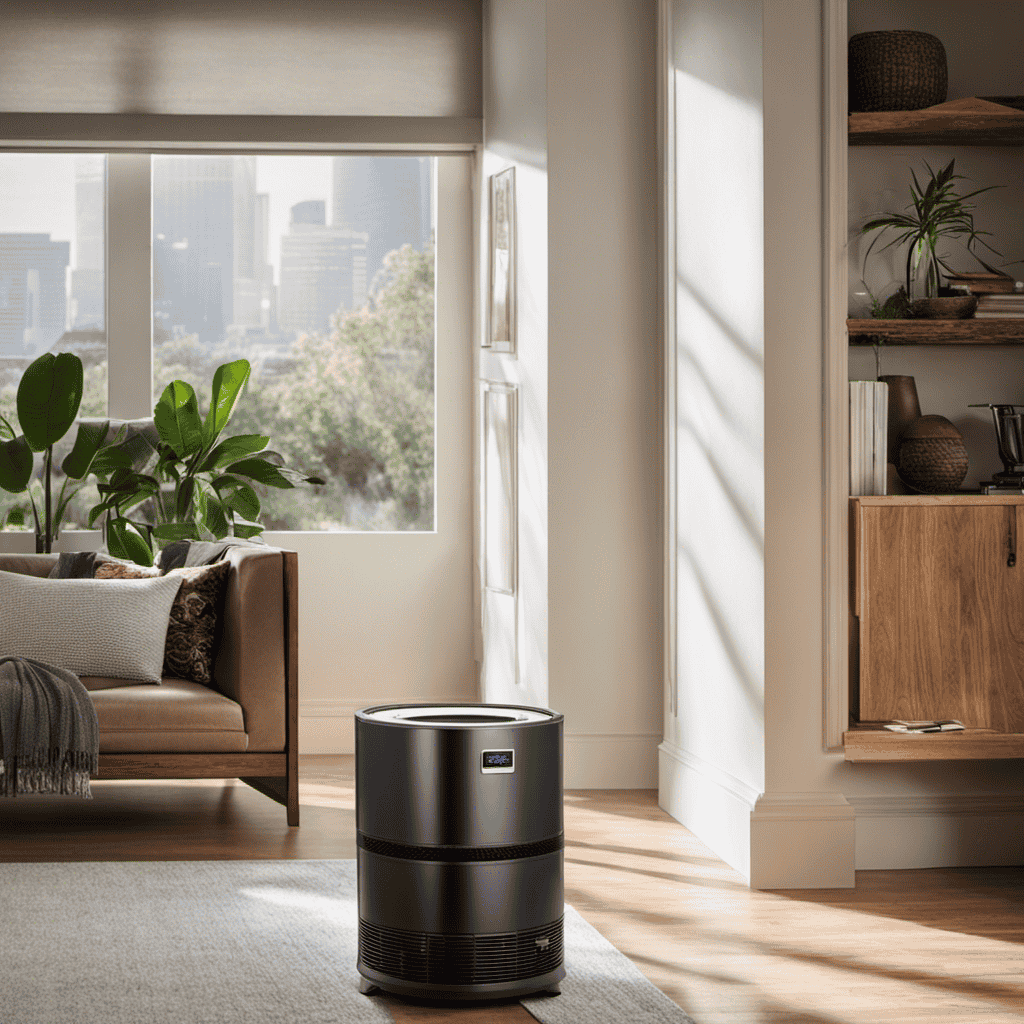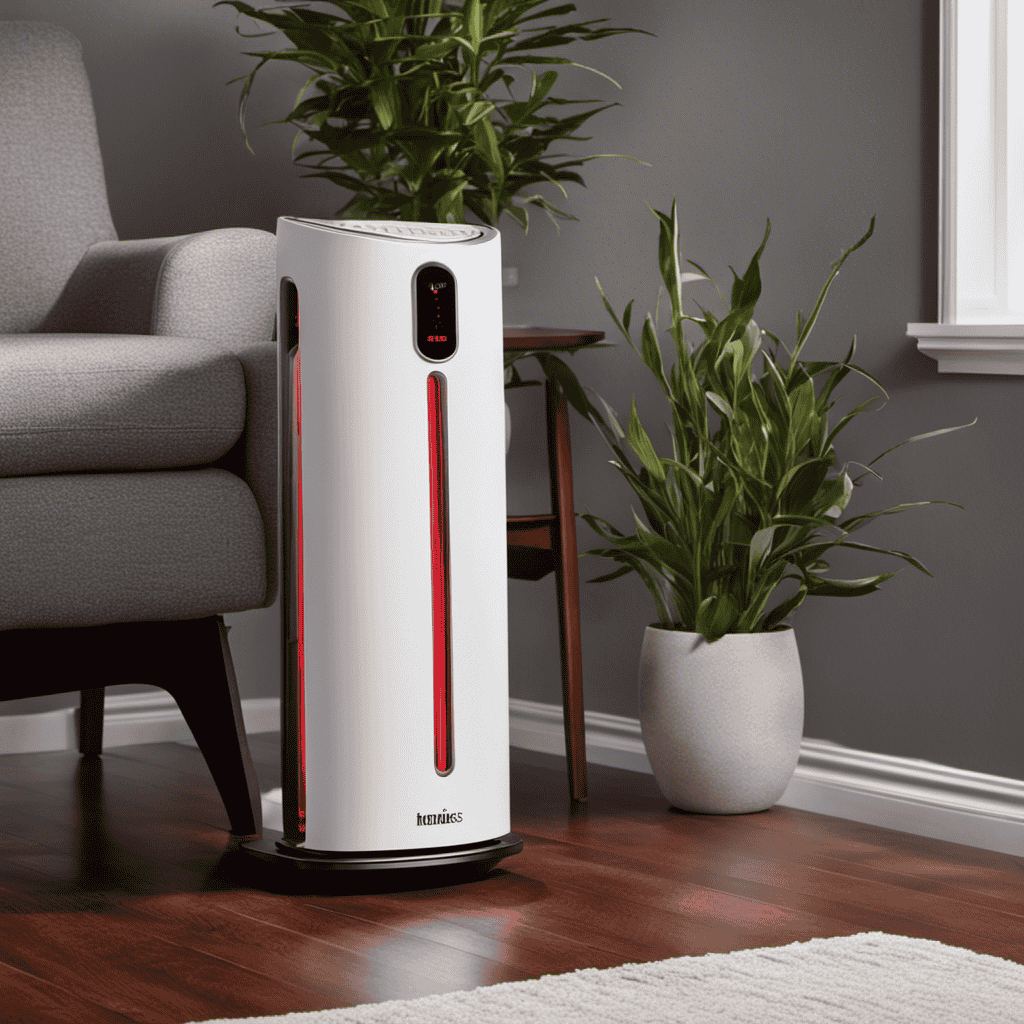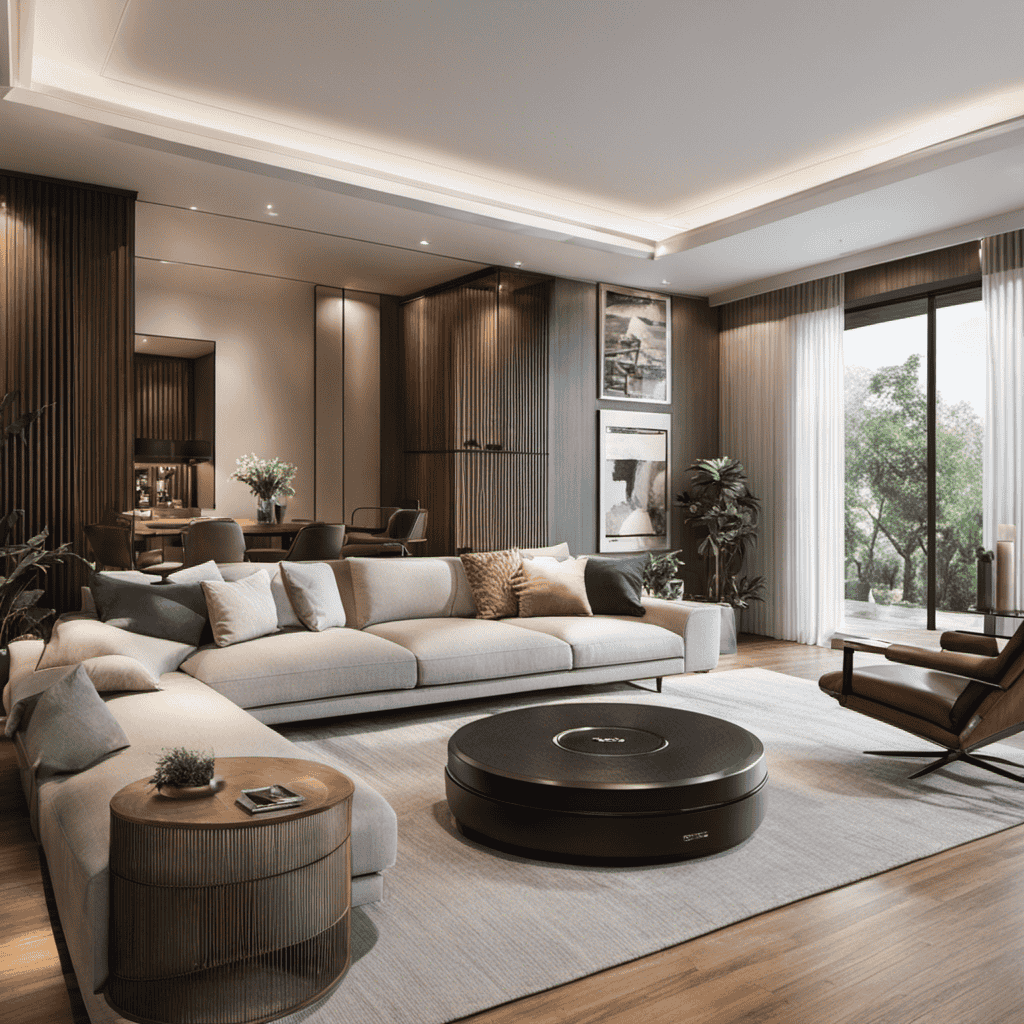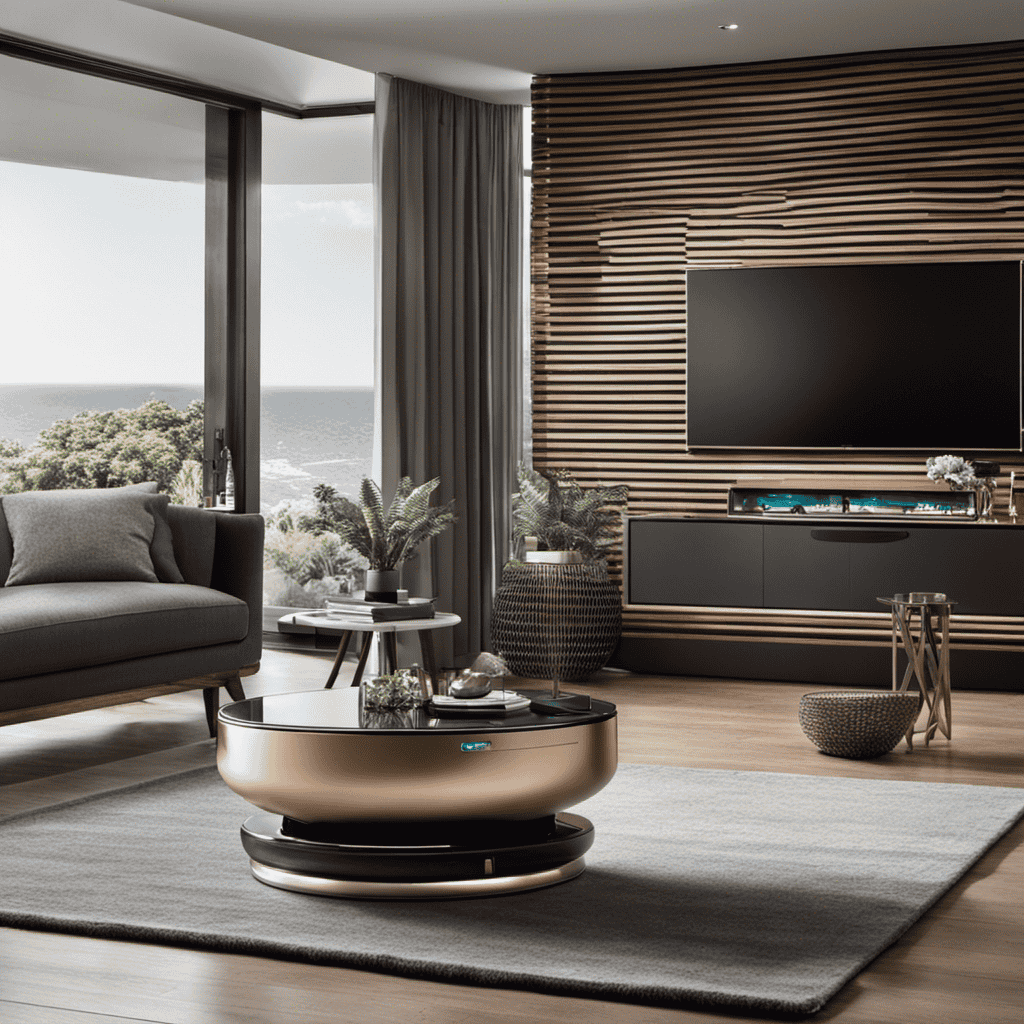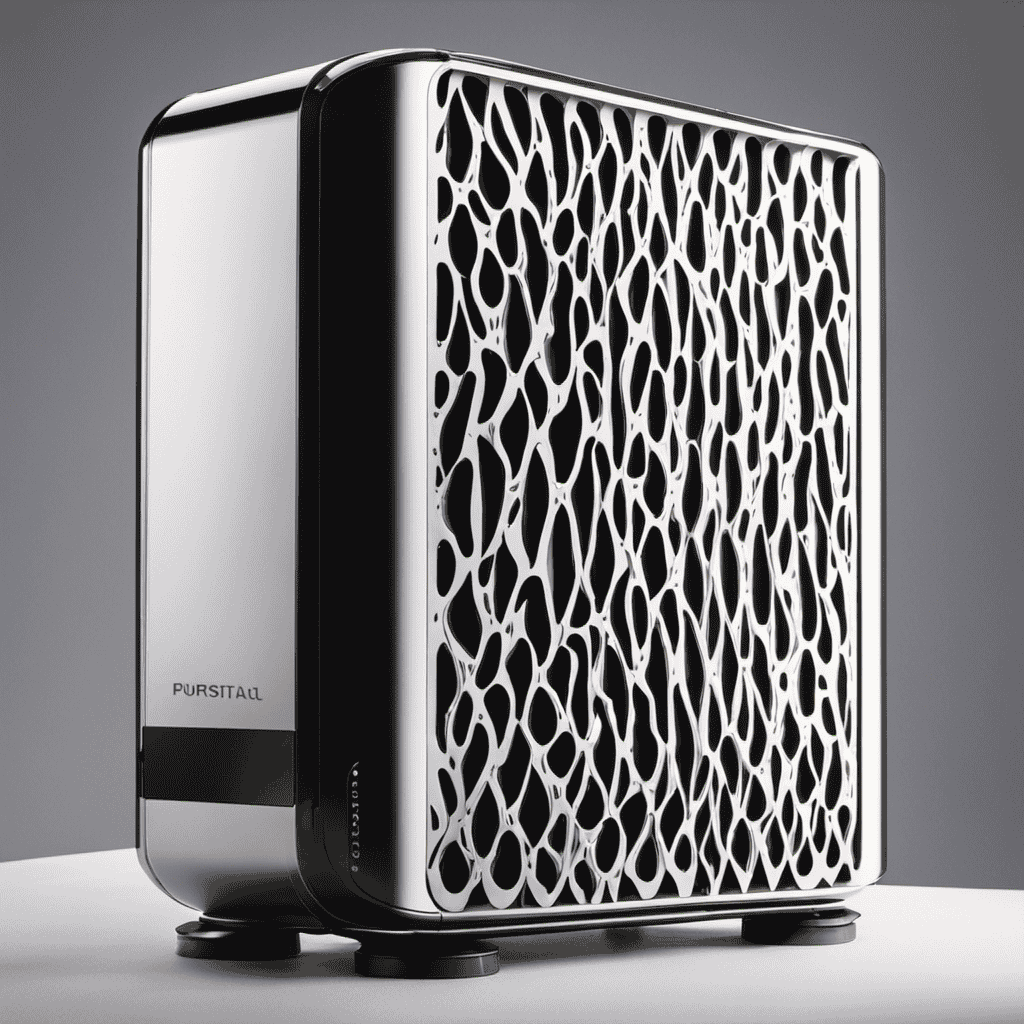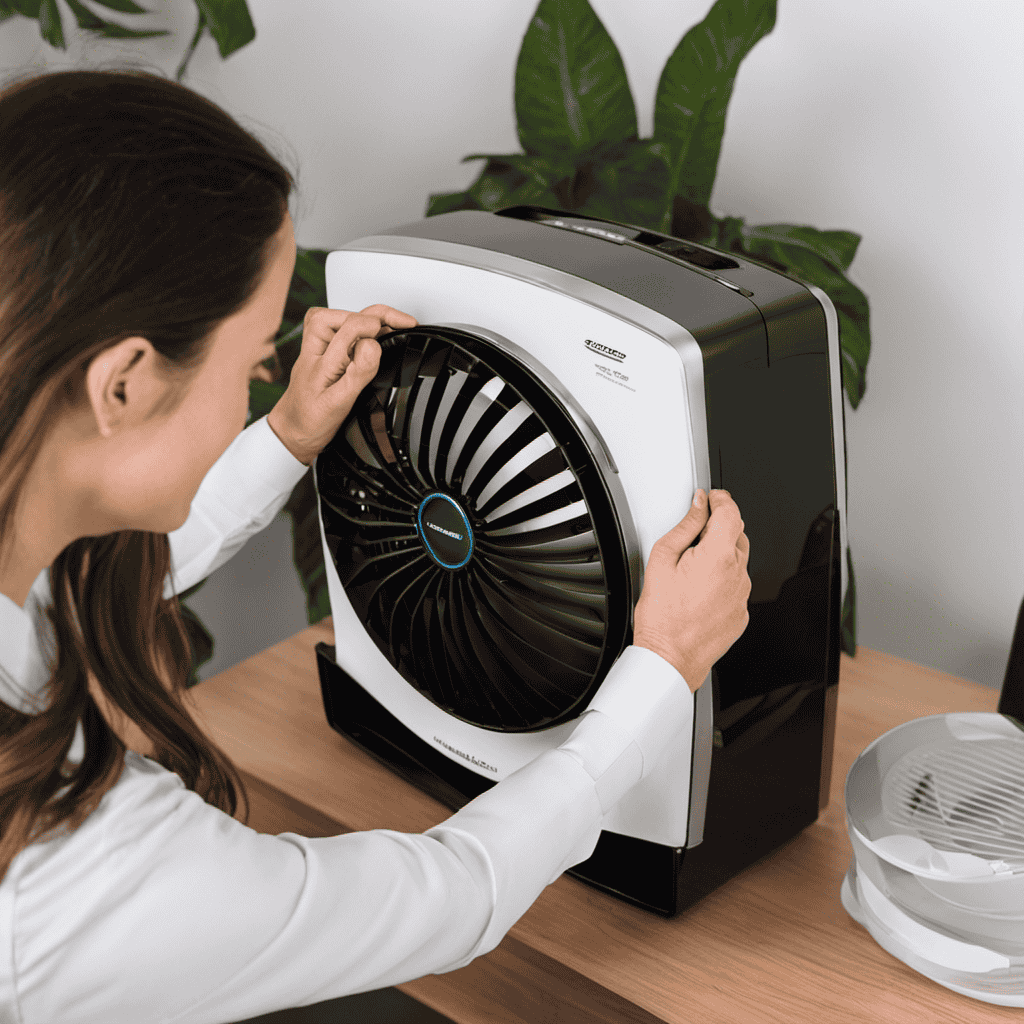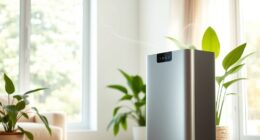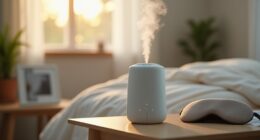When I inhale deeply, I experience a feeling of relief knowing that the air I am breathing is pure and clean. You may wonder, how is this possible?
Well, let me introduce you to the Austin Air Purifier. This remarkable device not only filters out harmful pollutants but also provides a constant flow of fresh, clean air.
However, like any filter, it requires regular maintenance, including timely filter changes. In this article, we will delve into the importance of knowing when to change your Austin Air Purifier filter and the consequences of neglecting this crucial task.
Key Takeaways
- The main filter should be changed every 5 years and the pre-filter should be changed every 1 year.
- Regular monitoring and replacement of filters is important to ensure effective pollutant removal and extend the lifespan of the air purifier.
- Signs of a clogged filter include dirt, dust, or debris buildup, and filters should be changed according to recommendations.
- Regular cleaning, vacuuming, and checking for any damage can help extend the lifespan of the filter and ensure cleaner air.
Factors Affecting Filter Lifespan
There are several factors that can affect the lifespan of an Austin air purifier filter. One of the main factors is the level of air pollution in the environment where the purifier is being used. High levels of air pollution can cause the filter to become clogged more quickly, reducing its effectiveness and lifespan.
Additionally, factors such as the size of the room being purified, the frequency of use, and the quality of the filter itself can also impact filter performance. It is important to regularly monitor the filter and replace it when necessary to ensure optimal air purification.
In the next section, I will discuss the recommended filter change schedule to help maintain the efficiency of the Austin air purifier.
Recommended Filter Change Schedule
You should follow the recommended schedule to change your filters for optimal performance.
The recommended filter change frequency for Austin Air Purifiers is every 5 years for the main filter and every 1 year for the pre-filter.
Timely maintenance has several benefits.
First, it ensures that your air purifier continues to effectively remove pollutants from your indoor air. Over time, filters become clogged with dust, debris, and allergens, reducing their efficiency. Regularly changing the filters allows the air purifier to maintain its maximum performance.
Second, it helps to extend the lifespan of your air purifier. By keeping the filters clean and free from buildup, you can prevent damage to the internal components and avoid costly repairs or replacements.
Following the recommended filter change schedule is essential for maintaining the air quality in your home and maximizing the lifespan of your Austin Air Purifier.
Signs of a Clogged Filter
If your indoor air quality starts to decline, it may be a sign that your filters are becoming clogged. In order to maintain optimal air quality, it is important to stay on top of filter maintenance.
Here are some frequent filter changes and maintenance tips to consider:
- Regularly inspect your filters for signs of dirt, dust, or debris buildup.
- Change your filters according to the manufacturer’s recommendations or every 3 months, whichever comes first.
- Consider using high-efficiency filters to improve air quality and prolong the lifespan of your filters.
- Keep a record of filter changes to ensure you stay consistent with maintenance.
By following these filter maintenance tips, you can ensure cleaner air and the longevity of your filters.
Now, let’s explore ways to extend the lifespan of your filter.
Extending the Lifespan of Your Filter
Regularly cleaning and vacuuming the area around your filter can help to extend its lifespan. By keeping the filter clean and free from debris, you can ensure that it functions at optimal efficiency, increasing the overall performance of your air purifier. Here are some filter maintenance tips to help you maximize the lifespan of your filter:
| Maintenance Tips | Frequency | Tools Required |
|---|---|---|
| Cleaning the filter | Every 1-3 months | Soft brush or vacuum |
| Replacing the filter | Every 6-12 months | Replacement filter |
| Checking for damage | Every 3 months | Visual inspection |
| Sealing air leaks | As needed | Weatherstripping |
Importance of Regular Filter Maintenance
Cleaning and maintaining your filter regularly is essential for ensuring optimal performance and longevity. Neglecting filter maintenance can lead to a decrease in air purifier efficiency and an increase in indoor air pollution.
Here are some benefits of regular filter maintenance:
-
Improved air quality: Regularly cleaning or replacing your filter removes dust, pollen, pet dander, and other allergens from the air, promoting a healthier environment.
-
Increased lifespan of the air purifier: A clean filter prevents dust and debris from clogging the system, reducing strain on the motor and extending the lifespan of your air purifier.
-
Energy efficiency: A clean filter allows the air purifier to operate more efficiently, reducing energy consumption and saving you money on your electricity bill.
-
Better performance: A well-maintained filter ensures that the air purifier can effectively capture airborne contaminants, providing you with cleaner and fresher air.
Remember to follow these filter replacement tips: check the manufacturer’s recommendations for the recommended lifespan of your filter, and clean or replace it accordingly. Regular maintenance is key to enjoying the full benefits of your air purifier.
How to Check if Your Filter Needs Changing
To determine if your filter needs changing, simply examine its appearance and assess its level of dust buildup. A dirty filter can significantly reduce the efficiency of your Austin air purifier, so it’s important to check it regularly. Here are some signs of a dirty filter to look out for:
| Sign of a Dirty Filter | Description | Action |
|---|---|---|
| Reduced Airflow | If you notice weak airflow | Replace the filter |
| Increased Dust | If you see more dust particles | Change the filter |
| Allergies Worsen | If your allergies worsen | Replace the filter |
Understanding Filter Lifespan and Air Quality
As an expert on air quality, I want to discuss three key points related to filter lifespan and air quality.
First, it’s important to understand the frequency at which filters need to be replaced to ensure optimal performance of your air purifier.
Second, recognizing the signs of poor air quality can help you determine if your filter needs changing sooner than expected.
Lastly, I’ll provide tips on how to maximize the lifespan of your filter to get the most out of your air purifier.
Filter Replacement Frequency
The recommended interval for changing the filter of an Austin air purifier is typically every 6-12 months. Regular filter replacements are crucial to maintain optimal air quality and ensure the efficiency of the purifier.
However, there are ways to extend the filter life and reduce filter replacement costs. Here are some tips:
- Vacuum the pre-filter regularly to remove large particles and debris.
- Use the air purifier on lower fan speeds when the air quality is relatively good.
- Keep windows and doors closed to minimize the entry of outdoor pollutants.
- Consider running the air purifier in rooms with higher levels of pollutants, rather than throughout the entire house.
Signs of Poor Air
Regularly vacuuming the pre-filter and using the purifier on lower fan speeds can help detect signs of poor air quality. By maintaining the air purifier, I can ensure that it continues to effectively filter out pollutants and keep the air in my home clean. But how do I know if the air quality is actually poor? There are several air quality indicators that can help me assess the situation. These indicators include visible dust particles in the air, unpleasant odors, and increased allergy symptoms. Poor air quality can have detrimental effects on my health, such as respiratory issues, allergies, and even cardiovascular problems. It is important to address these signs promptly and take necessary measures to improve the air quality in my living space.
| Air Quality Indicators | Health Effects |
|---|---|
| Visible dust particles in the air | Respiratory issues |
| Unpleasant odors | Allergies |
| Increased allergy symptoms | Cardiovascular problems |
Maximizing Filter Lifespan
To maximize the lifespan of your Austin Air purifier filter, there are a few key strategies you can employ.
First and foremost, regular cleaning of the pre-filter can help to remove larger particles and debris. This reduces the workload on the main filter, increasing its efficiency and prolonging its lifespan.
Additionally, vacuuming the exterior of the filter can help to remove any accumulated dust and improve airflow.
Avoiding exposure to excessive moisture is also crucial, as it can lead to mold growth and decrease filter effectiveness.
Finally, following the manufacturer’s recommendations for replacement intervals is essential. This ensures that the filter is changed at the appropriate time, maintaining optimal air quality.
By implementing these strategies, you can effectively increase filter efficiency and prolong the lifespan of your Austin Air purifier filter.
Transition: Now that we understand how to maximize the lifespan of our filters, let’s explore the benefits of timely filter replacement.
Benefits of Timely Filter Replacement
As a user of an Austin air purifier, it’s important for me to understand the importance of filter lifespan and its impact on air quality.
Timely filter replacement plays a crucial role in maintaining optimal performance and ensuring cleaner and healthier air.
Filter Lifespan Importance
You should keep in mind the importance of the filter lifespan when using your Austin air purifier. Regularly changing the filter is crucial for maintaining the effectiveness of your air purifier and ensuring its optimal performance. Here are four reasons why filter lifespan is important:
-
Air purifier effectiveness: Over time, filters become clogged with particles and contaminants, reducing their ability to capture airborne pollutants. Changing the filter regularly ensures that your air purifier continues to effectively remove allergens, dust, and other harmful substances from the air.
-
Filter efficiency: Filters have a specific lifespan, which is determined by factors like usage, air quality, and filter type. By adhering to the recommended filter replacement schedule, you can ensure that your air purifier operates at maximum efficiency, providing you with cleaner and healthier air.
-
Indoor air quality: A filter with a longer lifespan may not effectively remove pollutants, compromising the air quality in your home. Regularly changing the filter helps maintain clean indoor air, reducing the risk of respiratory issues and allergies.
-
Energy efficiency: A clogged filter puts strain on the air purifier’s motor, leading to increased energy consumption. Changing the filter when needed can help improve the energy efficiency of your air purifier, saving you money on electricity bills.
Air Quality Impact
Regularly monitoring the quality of your indoor environment is essential for ensuring the health and well-being of you and your loved ones. One of the key factors that can significantly impact air quality is the maintenance of your air purifier’s filters. Proper filter maintenance is crucial in removing harmful pollutants and allergens from the air, thereby reducing the risk of respiratory problems and allergies. To help you understand the importance of filter maintenance, here is a table highlighting the impact of air pollution on our health:
| Health Effects of Air Pollution |
|---|
| Increased risk of respiratory diseases |
| Aggravation of asthma symptoms |
| Irritation of the eyes, nose, and throat |
| Cardiovascular problems |
| Reduced lung function |
Frequently Asked Questions
Can I Clean the Filter Instead of Replacing It?
No, it is not recommended to clean the filter instead of replacing it. Cleaning methods may reduce short-term contaminants, but they can negatively affect the long-term effectiveness of the filter.
How Often Should I Clean the Exterior of My Air Purifier?
I clean the exterior of my air purifier on a regular basis as part of my maintenance routine. Following a cleaning schedule helps ensure optimal performance and prolong the lifespan of the device.
Is It Necessary to Change the Pre-Filter as Often as the Main Filter?
It’s important to consider the lifespan and maintenance of the pre-filter when discussing filter changes. While it may not need to be changed as often as the main filter, regular cleaning or replacement is still necessary for optimal performance.
Can I Use a Different Brand of Filter in My Austin Air Purifier?
I can use a different brand of filter in my Austin air purifier, but it is important to ensure compatibility. The manufacturer’s recommendations should be followed for filter replacement to maintain optimal performance and efficiency.
Are There Any Specific Environmental Factors That Can Affect the Lifespan of the Filter?
The effects of air pollution and the impact of humidity on the lifespan of the filter are important considerations. Environmental factors like these can significantly affect how often you need to change the filter.
Conclusion
In conclusion, regular maintenance and timely replacement of filters are crucial for ensuring clean and healthy indoor air quality. According to a study conducted by the Environmental Protection Agency, a clogged air filter can reduce the efficiency of an air purifier by up to 50%. This statistic highlights the importance of changing filters at the recommended intervals to maintain optimal performance and effectiveness.
By following the recommended filter change schedule and practicing proper maintenance, you can ensure that your Austin air purifier continues to provide you with clean and fresh air.
